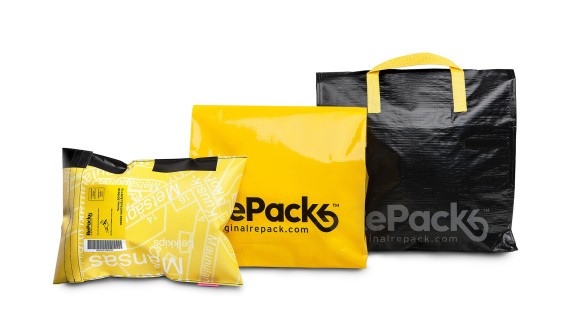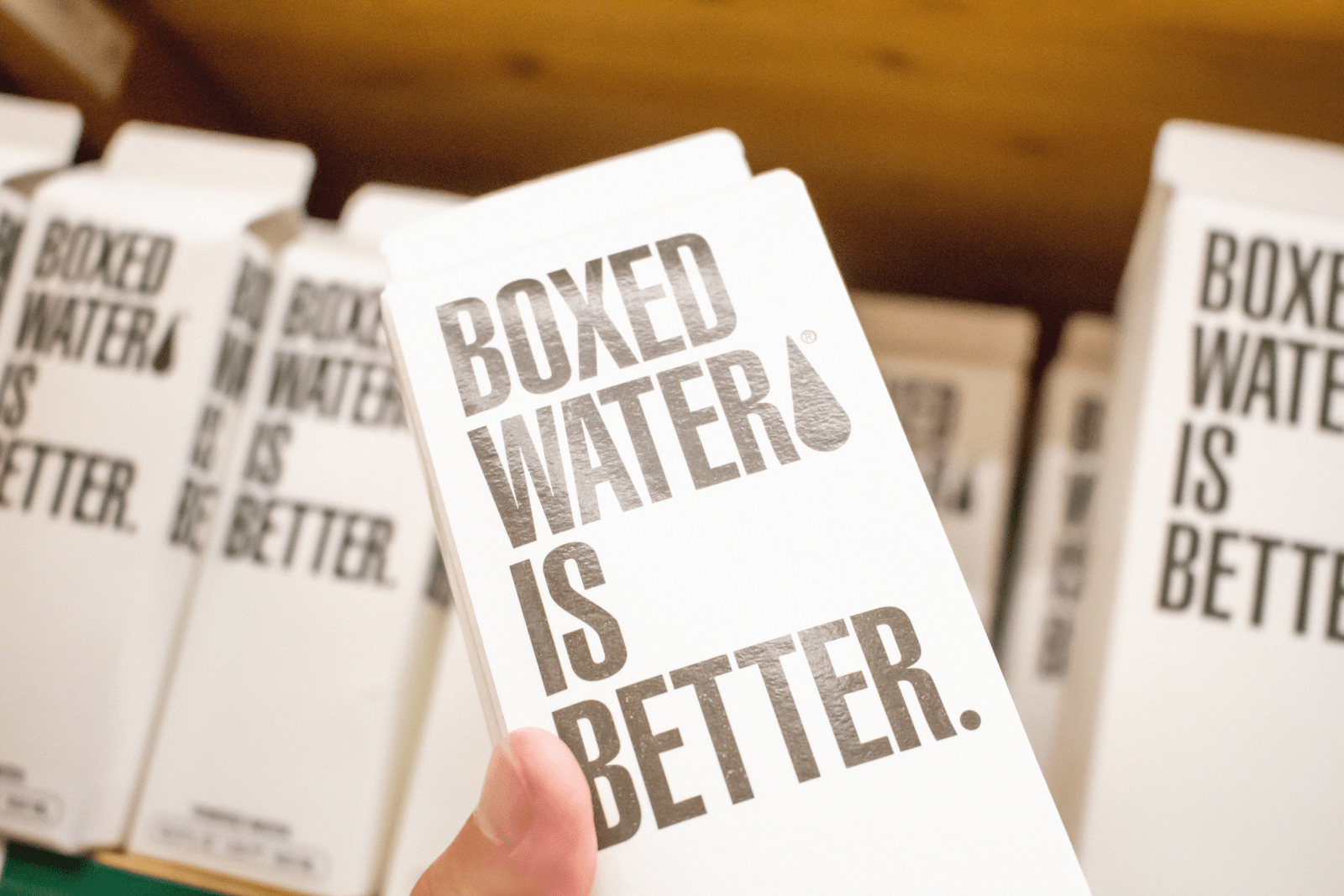Once very rare and now more common, DTC companies can still deepen their connection to customers with sustainable packaging design.
Warc, a marketing insights platform company, says that direct-to-consumer businesses have generated plenty of market disruption in the past few years. These DTC brands rapidly evolved from startups and gained significant market shares from established competitors.
Mostly, DTC companies accomplished this quick ascent by aligning their businesses to the needs and behaviors of today’s customers. Typical strategies included eCommerce marketing, heavy reliance on data, and a strong design- and customer-oriented focus. They attracted customers by offering what their marketed wanted in a convenient, reliable, and authentic way.
Market growth history and predictions should encourage DTC brands. At the same time, they need to keep up with current trends in order to avoid losing out to future market disruptions. These may come from new companies or even rapidly evolving traditional competitors.
Coca-Cola is even making strides toward sustainable packaging. Announced in February 2021, they are launching a new bottle size for the first time in a decade that is made of 100% recycled plastic material. This is part of their several-year initiative to reduce its plastic waste.

The rise and rapid saturation of DTC brands
Recent studies have reported that 33 percent of American consumers intend to spend at least 40 percent of their shopping dollars buying directly from companies within five years. Still, as market share for DTC businesses increases, so does competition.
Well-known companies directly sell everything from mattresses, furniture, and electronics warranties to pants, shoes, and shavers. At the same time, consumers now know that they have more DTC brands to choose from. For instance, established, older companies have adapted at least parts of the DTC business model.
For some examples:
- Amazon now has its own private labels, like Amazon Basics, that compete with other sellers on the largest retail platform.
- Business that first gained prominence with brick-and-mortar retail stores, like Walmart, have increasingly moved online. They also sell their own store brands.

In order to keep growing in a rapidly saturated market, DTC businesses need to demonstrate not just their competitive advantage over legacy businesses but also each other.
Some attractive aspects of DTC marketing may include better pricing because of cutting out the middleman, the convenience of online ordering, and the trust instilled by great customer service. Honestly, some companies don’t have that much room to improve with current services and tech. As an example, when it comes to service, technology, and even shipping, it’s hard to beat Amazon.
The best DTC product packaging companies have an edge
Because it’s often the first physical contact that customers may have with the company, a good packaging design agency would argue that clients should find out how they they might establish a competitive advantage with appealing and sustainable packaging design.
Sustainable DTC packaging
As reported by Forbes, Southern Cross University managed a study of ecological concerns and the actions people would take to preserve the environment. This broad study included adults of all ages.
Consider these highlights of the study results:
- Interest in the environment: Not only did an overwhelming majority of respondents, 93 percent, report at least a general concern about the environment, 77 percent reported an interest in learning about more ways to live sustainably.
- Already taking eco-friendly steps: Even more, most of the study participants supported their answers by already taking at least some measures, like recycling, using reusable bags for shopping, and avoiding single-use plastics.
Since customers often opt for DTC brands because of convenience, why not make it convenient for customers to support their sustainable lifestyle?
Some companies center their entire business model around sustainability and back that up with their packaging. As an example, Shopify highlighted the way that Misfits ships “ugly” produce directly to customers. In this case, ugly means produce that’s perfectly edible and tasty but doesn’t conform to the uniform sizes and shapes generally seen in grocery stores. Just by marketing this produce, the company says it helps reduce food waste and greenhouse gas emissions.
To take this mission one step further, Misfits also ships their produce in 100-percent recyclable cartons. They’re also testing paper-based insulation and use compostable, plant-based bags instead of plastic. Mission not only promotes sustainable products but also sustainable packaging.

How to use package design services to create sustainable packaging
Creating sustainable packaging begins with finding product packaging companies and designers in alignment with a brand and their customers. For that effort, Environment Energy Leader has some suggestions from packaging pros.
- Make certain the product packaging design services definition of sustainable aligns with the brand. For instance, sustainable packaging definitions may include everything from material sourcing to where the package and packing materials will end up after they’re discarded.
- Work on right-sizing packaging. Late-night comedians joke about ordering small products, only to get them in a large box with lots of wasteful padding. To avoid that sort of attention and save on shipping, become a shipping minimalist.
- Look for eco-friendly alternatives to common shipping products. As an example, consider replacing loose filling with cardboard inserts. If companies can ship their product in an envelope, perhaps they should not use a box.
Mostly, do some homework, ask questions, and try to keep an open mind. Obviously, brands won’t want to sacrifice shipping quality for sustainability. However, some great solutions can protect products, save money both on packing materials and shipping, and appeal better to eco-conscious consumers.
Consider multi-use DTC packaging
Some products might rely upon less-sustainable containers. A few brands and packaging designers have demonstrated their resourcefulness by making the containers reusable, so consumers won’t even want to discard them. In other words, once customers have used up or unpacked the product, they still have a handy container.
This idea isn’t really new for anybody old enough to remember when parents bought Welch’s jelly, so their kids could reuse the Flintstones jars as drinking glasses. And who hasn’t seen an old cookie tin filled with buttons, loose coins, or other knick-knacks? During the Great Depression, flour mills printed their cloth sacks with nice designs, so resourceful seamstresses could use the fabric to make clothes.
For some modern and creative examples:
- A company called Herbal Water sends its products in packs of four inside wooden cartons. After consuming the original product, customers can reuse the packaging to store other cans and bottles.
- Maude Paquette-Boulva packages its honey in a beeswax container that transforms into a candle once the honey’s gone.
- Varvara Komarova uses plastic packaging for its snacks. However, each snack comes in a geometric shape that interlocks with other packages, so kids can collect building blocks.
- One product packaging design agency, Karin Hilgenkamp, created packaging for DSLR cameras that doubles as instruction books. Once the customers remove the camera and accessories, they can fold the package into a handy manual to help them use their camera.

Really, good DTC packaging designers can come up with endless possibilities for running with the old jelly-glass idea. And as with the jelly glasses, sometimes the packaging can create an even more memorable experience than the products do. Go ahead and ask a Baby Boomer. They probably don’t remember the jelly that much, but they do remember the Flintstones glasses.
If a brand has very specific needs and cannot come up with a creative idea for reusable or sustainable packaging, they still can find another appealing solution. As an example, the RePack System encourages customers to send their packaging back to the company.
The plastic envelopes come with a reshipping label, plus customers get rewarded with a voucher for their next purchase. This encourages both sustainable practices and customer loyalty.

Learn more about the impact of DTC packaging on consumers and brands
DTC brands have increased their market share by embracing their customers. They reacted to changing behaviors and requirements. Appealing and sustainable packaging design will only contribute to this effort and create a competitive advantage that may not require a huge investment.
Indeed, smarter packaging often saves brands money by cutting shipping costs. In any case, brands can use their packaging to market an additional benefit. In turn, they will attract new customers and retain their loyal ones. Mostly, appeal doesn’t just mean that packages look good. It also means that packages will appeal to customer’s values and sensibilities.
The president of Pacific Packaging Components, Brandon Frank, further discussed the impact of DTC product packaging with BigEye, a DTC marketing agency. He mentioned that in this era of social media unboxing videos, packaging has evolved into an essential part of the customer experience.
Learn more about the potential impact of innovative packaging and hear about more great examples that Mr. Frank’s company has already developed in this free podcast, “Creating Sustainable DTC Packaging.”

